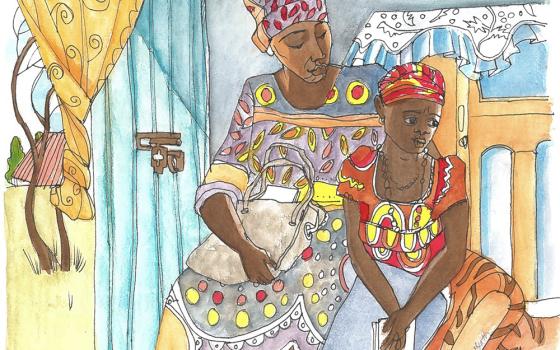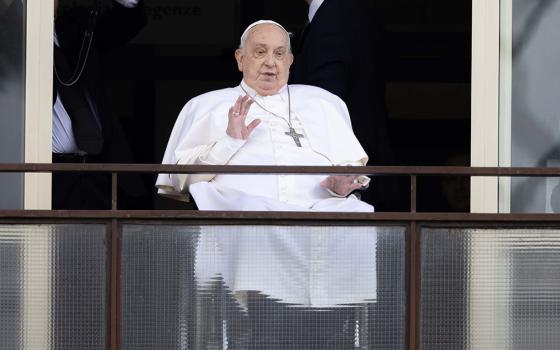Ninety-nine years ago, on May 16, 1916, the Sykes-Picot Agreement, officially known as the Asia Minor Agreement, laid down the borders of the Middle East as we have known them for a century. The diplomats, Francois Georges-Picot for France and Sir Mark Sykes for Britain, had worked out the details in five months of negotiations, from November 1915 to March 1916.
The agreement was marked out on a map with grease pencil in a series of straight lines, most likely to create "uncomplicated borders." The agreement divided the land that had been under Ottoman rule since the early 16th century into new countries in two spheres of influence: Iraq, Transjordan and Palestine under British control; and Syria and Lebanon under French control.
Sykes-Picot had two fatal flaws. The first flaw was that the agreement was concluded in secret, negating the main promise that Britain had made to the Arabs in the 1910s -- that if they rebelled against the Ottomans, they would be granted independence.
The second major flaw of Sykes-Picot was that the straight lines drawn delineating countries' borders did not correspond to the actual sectarian, ethnic or tribal distinctions on the ground. At first, from the late 1950s to late 1970s, these differences were buried, first under the Arabs' struggle to eject European colonial powers and later by the sweeping wave of Arab nationalism and the "united front" necessary to confront the challenge of the establishment of the state of Israel.
Both flaws contributed to the chaotic conflict that has plagued the Middle East and is today tearing the region apart at the seams. Instead of building and nourishing the key ingredients of a healthy nation-state such as civil institutions, a free press, free and fair elections, equality, religious tolerance and pluralism, national citizenship, and multiparty systems, Sykes-Picot laid the groundwork for intensified tribalism and violent religious sectarianism. They created a playing field for global and regional proxy conflicts amid a collection of self-serving dictatorial regimes, monarchies and eventually even a theocracy.
In the early decades of the 20th century, Egypt, Syria and Iraq had begun to lay the foundations of democratic self-government. But as the colonial powers in the 1920s, '30s and '40s continued to exert immense influence over the Arab world, the thrust of Arab politics -- in North Africa and in the eastern Mediterranean -- gradually but decisively turned to assertive nationalism whose main objective was ousting the European colonialists.
Beginning in the 1950s, anti-colonialism was a key factor contributing to the rise of the militarist regimes in many Arab countries. After achieving independence in guerrilla wars and in military coups against European puppets like King Farouk of Egypt and King Faisal II in Iraq, Arab states evolved into an assortment of dictatorships and sham democracies, with the ruler and the elites around him supported by global powers engaged in a Cold War who had little or no interest in building Middle Eastern democracies.
In these independent but authoritarian states, any type of civil or secular opposition was brutally quashed, forcing political opposition into the mosques and allowing groups such as the Muslim Brotherhood in Egypt to methodically and patiently build religious political structures that were ready to spring into action once the 2011 Arab Spring toppled the dictatorships.
The one Middle Eastern country that held a free election was Iran in 1952, electing Prime Minister Mohammed Mossadegh. Mossadegh was overthrown the following year in a coup d'état planned and executed by the CIA and supported by the United Kingdom, a fact confirmed in 2013 by the U.S. National Security Archive. Mossadegh had offended the West by trying to nationalize the Iranian oil industry that was controlled by Western oil companies.
Mossadegh was replaced by the Shah Mohammad Reza Pahlavi, ushering in a 26-year absolute monarchy that was a key U.S. ally. The shah's extravagant-spending authoritarian rule led to the 1979 Iranian revolution and the establishment of a religious theocracy. The mullah-led government was the first wave of religious militancy in the region, modeling a new form of identity politics. As such, it unleashed forces still wreaking havoc in the region and generating Islamic hostility to the United States and the West.
The U.S. invasion of Iraq deposed a dictator but also brought a previously suppressed Shiite majority to power. The Shiite emancipation pitted Shiite states and nonstate militias against entrenched Sunni power. The Sunni-Shiite divide is the most obvious difficulty brought on by Sykes-Picot's straight-line mapping with its denial of historical, religious and ethnic realities.
How long the current tumult will continue in the Middle East and how different the landscape will look at its conclusion are still open questions. "What we are witnessing is the demise of the post-Ottoman order, the demise of the legitimate states," said Francis Ricciardone, a former U.S. ambassador to Turkey and Egypt. "ISIS is a piece of that, and it is filling in a vacuum of the collapse of that order."
According to Vali Nasr, dean of the Johns Hopkins School of Advanced International Studies in Washington: "The Middle East is going through a period of big turmoil, after which it will end up with a very different political configuration and perhaps also a different territorial configuration." Such new configurations are already looking likely in Syria and with the Kurds in northern Iraq.
"Colonial powers within the states created colonial administrations that educated, recruited and empowered minorities," Nasr said. "When they left, they left the power in the hands of those minorities -- they left the dictatorship of the minorities."
"Power was so out of alignment [with demography] in Iraq, Syria and many of these countries, and there is no proper formula of how to make this right. The winners don't want to share, the losers don't want to give up power."
There is no guarantee that the new Middle East that will rise out of the ashes will reflect historical lessons learned. The population of the Middle East is one of the youngest in the world: Two-thirds of the population is under the age of 35. The current mega-crisis presents a critically important opportunity to build real democracies that reflect the cultural and religious idiosyncrasies of the region while concurrently educating this young population on the importance of democratic values.
Authors' note: This blog post is part one of a two-part series. The second part will analyze and offer recommendations on building the foundation of a new Middle East.
[Jesuit Fr. Drew Christiansen is former editor of America magazine and a professor of ethics at Georgetown University. Ra'fat Aldajani is a Palestinian-American writer and commentator.]




